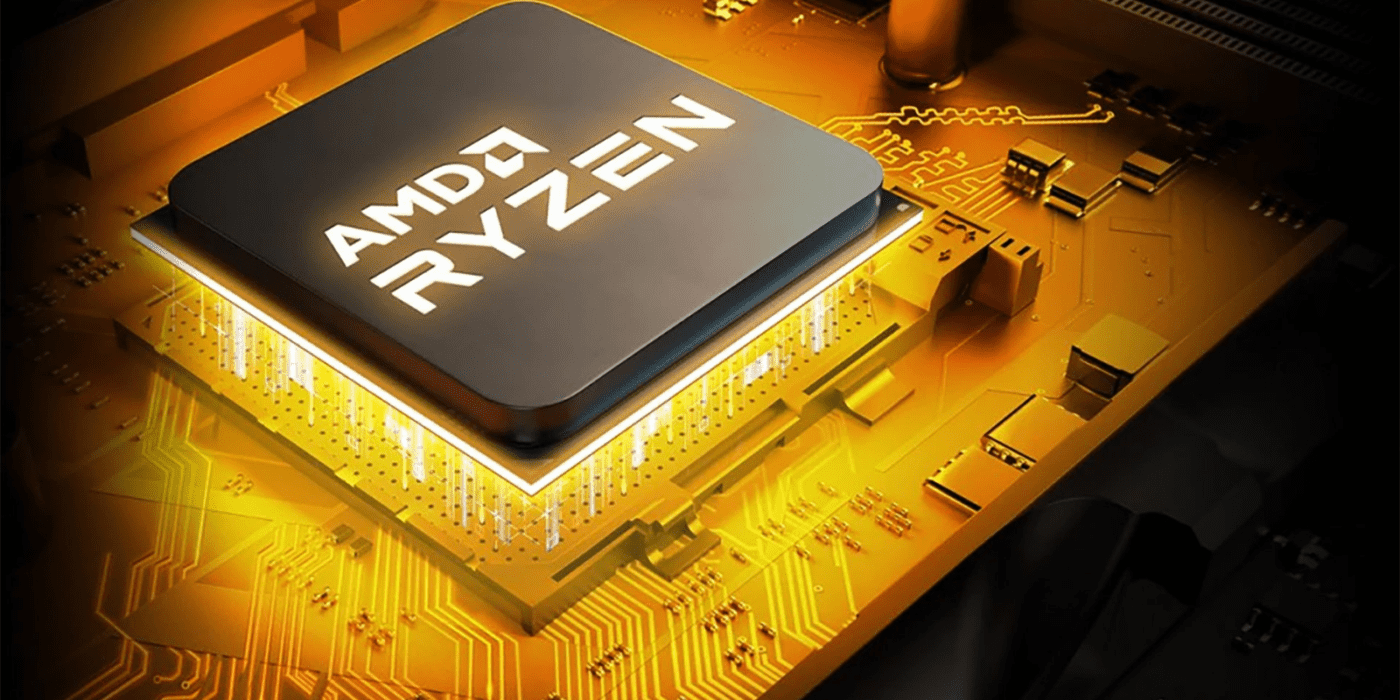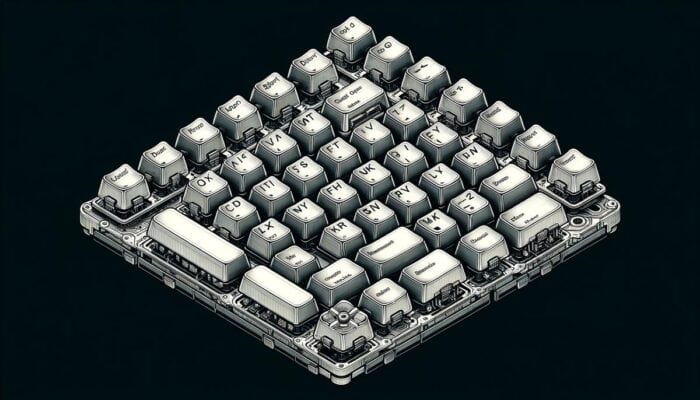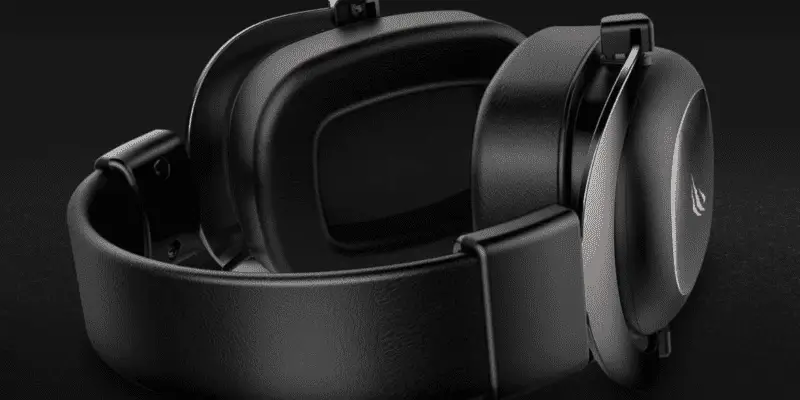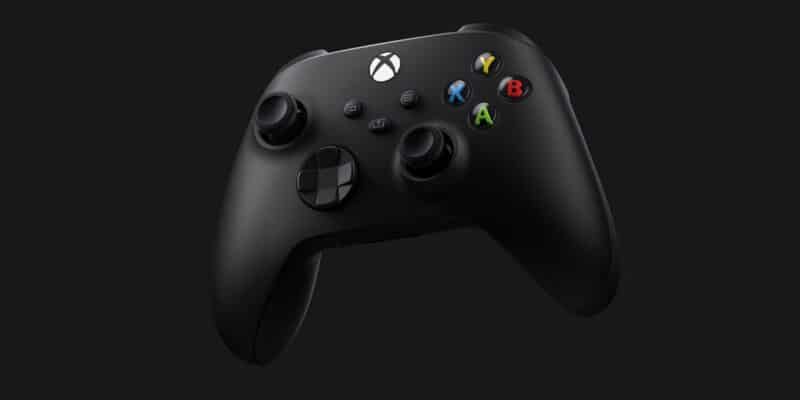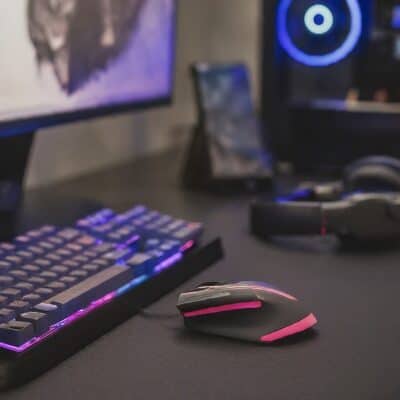Gaming Laptops, Blog
Which CPU is Great for Gaming, Intel or AMD Ryzen? – 3 Top Gaming Laptop to Picks!
Which CPU is great for gaming, Intel or AMD Ryzen?
If you’re looking to get a new PC or upgrade an old one…
…you need to make an important decision:
Should you get an AMD or Intel processor?
There is no doubt that AMD versus Intel rivalry…
…is one of the biggest arguments between PC enthusiasts…
…and with a new Intel release around the corner, the competition is heating up.
AMD’s Ryzen 5000 processor jumped ahead of Intel’s 10th-generation processors…
…with its launch, holding a clear lead in gaming and productivity workloads.
Despite AMD’s price advantage, Intel catches up…
…with its 11th-generation Rocket Lake processors…
…which come at a lower price than AMD’s.
AMD offers its Ryzen 5000 mobile chips in the laptop segment…
…but they don’t appear in nearly as many machines as Intel’s Tiger Lake processors.
The balance between AMD and Intel shifts with each new product launch.
Here are a few words from Luna…
Just a few months ago, my little sister’s laptop broke.
Because she needs the laptop for school, she is still sad about the laptop.
I began saving up for her new laptop as soon as I began working part-time.
Her laptop needs to have a good CPU or Processor, it needs to be the best it can be.
Last week, I bought her a gaming laptop…
In this way, she will be able to be both productive and playful at the same time.
I am pleased to see her smiling, as she appears to be very happy.
Now let’s jump right in…
Which CPU is Great for Gaming?
Desktop Processors
Prior to AMD Ryzen 3000 and AMD Ryzen 5000…
…AMD CPUs were only good for budget and entry-level PCs.
Although AMD still offers great value, it now does so throughout the entire price…
…and performance spectrum, competing with Intel on almost everything…
…and taking the lead in a few specific areas, even at the high end.
The most affordable AMD and Intel chips will cost between $40 and $60…
…for two cores and energy-efficient clock speeds.
Most midrange CPUs cost between $200 and $350…
…while a top gaming CPU costs around $500.
Spend north of $1,000 if you want…
…to speed up intensive tasks like video editing and transcoding.
Both AMD and Intel have excellent processors for gaming and productivity tasks…
…such as video editing and transcoding, but they do have their own strengths as well.
With 12 and 16 cores, the Ryzen 9 5900X and 5950X, AMD’s best, beat anything Intel has to offer.
Currently, Intel’s best CPU is the Core i9-10900K.
Intel has already released its 11th-gen desktop platform, which will replace the 10900K.
However, the last-gen chip is much better value for money.
The 10900K performs about as well as the 11900K, and its price is dropping.
Additionally, the 11900K has some thermal issues…
…making the 10900K the obvious choice for team blue.
The best CPU for gaming or work does not have to be the most expensive one.
For around $300, AMD’s Ryzen 5 5600X with six cores…
…and a high boost clock is a fantastic AMD chip for both work and play.
Intel offers the 11600K in this price bracket…
…which matches the 5600X with six cores and 12 threads.
However, the 11600K has high power and thermal requirements.
The 11600K has twice as much power draw as the 5600X on paper…
…but in real-world use, it can draw even more.
AMD processors tend to offer better value for money at entry-level segments…
…with standouts such as the 3300X and 3600…
…offering outstanding multitasking and gaming capabilities.
We don’t have budget Ryzen 5000 options yet, though we will have them sometime in 2021.
However, Intel’s 10300F is a serious competitor.
AMD’s 3200G and Intel’s Core i3 10100 are low-priced options…
…that allow you to start your system without an additional graphics card…
…making them excellent for office work and watching Netflix, but not much more.
AMD offers Ryzen 5000 APUs with Radeon graphics if you want to dip your toe into light gaming.
“Factors outside of performance may make you choose one manufacturer over the other. Intel’s latest-generation CPUs have far better support for Thunderbolt 3 ports if that’s something you can make use of. On the other hand, AMD offers overclocking on its cheaper B-series chipset, allowing budget builders to squeeze the most performance out of their machine.”
Jon Martindale – Computing Coordinator at Digital Trends
Currently, AMD is the better option for desktops, but that may change soon.
Intel plans to launch hybrid Alder Lake processors in late 2021.
The new architecture combines two types of cores to boost core counts…
…and rumors say they could perform much faster than Intel’s current offerings.
High-end Desktop
When you need to perform heavy video editing at high resolutions…
…intensive video transcoding, or any other intensive task…
…that needs more power than most mainstream CPUs offer…
…HEDT CPUs might be what you need.
AMD and Intel both offer products in this space…
…with higher core counts and thread counts.
AMD’s options, however, remain the most capable and cost-effective.
Intel’s HEDT line offers up to 18 cores and 36 threads on the 10980XE…
…but even if it’s in stock, you’ll pay its suggested…
…retail price of $980 despite it being over two years old.
Though technically a 10th-gen CPU, the 10980XE…
…and its fellow Intel Core i9 X-series CPU models use Cascade Lake-X…
…which is far less powerful than Intel’s mainstream Comet Lake CPUs.
Even though it’s still a powerful CPU, AMD’s alternatives make it hard to recommend.
At under $800, AMD’s 5950X mainstream CPU offers credible competition…
…for the 10980XE, so it is a better deal. For extra performance, however, the sky’s the limit.
There is support for up to 64 cores in AMD’s third-generation Threadripper CPU…
…and all while maintaining clock speeds around the 4GHz mark.
As long as your software is able to utilize all those extra cores…
…AMD’s Threadripper CPUs offer unparalleled performance…
…outside of obscenely expensive server CPUs, easily outperforming Intel’s.
In addition to supporting a greater number of PCIExpress lanes…
…they support 64 instead of 44 on the Intel alternatives…
…making them more suitable for larger storage arrays.
The 3960X, 3970X, and 3990X are more expensive…
…costing $1,400, $1,850, and $3,600, respectively.
However, if you can make your work more efficient…
…and more profitable by purchasing them, the cost could be worth it.
Additionally, AMD offers Pro versions of these Threadripper chips…
…such as those in the Lenovo ThinkStation P620.
It is almost identical to the base models, just with more memory and PCIe lanes.
The Threadripper 5000 chips are expected to be launched by AMD this year.
Intel and AMD also offer server CPUs above HEDT offerings.
AMD has the Epyc range, which is currently in its third generation.
AMD Epyc 7763 server CPUs come with 64 cores and 128 threads…
…256 MB of cache, and a boost clock of 3.68GHz.
There is nothing comparable in Intel’s Xeon server processors.
In terms of performance, the Intel Xeon W-3275 is the best of the lot…
…with 28 cores and 56 threads, 38.5MB of cache, and a max turbo of 4.6GHz.
Sapphire Rapids Xeon CPUs will be available from Intel next year.
The Alder Lake desktop platform uses the Intel 7 manufacturing process…
…which is also used in these processors.
Even though they have a staggering amount of power…
…Intel Xeons and AMD Epycs are more hassle than they are worth.
For maximum multi-threaded performance, stick with HEDT offerings…
…from AMD and Intel unless you plan to use one in the data center.
Laptop Processors
A different story unfolds in the laptop market.
The vast majority of notebook computers are powered…
…by Intel processors with integrated graphics.
In the words of a Dell representative, Intel’s portfolio is simply bigger than AMD’s…
…and its laptop lineup and CPUs are better than ever.
Despite Intel’s sluggish desktop processor development in recent years…
…its mobile processors have been far more exciting.
Ice Lake CPUs introduced a more efficient design…
…with 11th-generation graphics that can run many esports games at 60 frames per second (fps)…
…without the need for a graphics card. With the 11th-generation Tiger Lake mobile processors…
…such as the one used in the Acer Swift 5, that trend continues.
There is also the Tiger Lake H processor, which offers even more general computation power.
Using the Tiger Lake design, these high-performance chips push the power limits further…
…with faster clock speeds and more cores. Tiger Lake H chips can be found…
…in high-end gaming laptops such as the Razer Blade 15.
Mid-2021, you can expect many machines…
…to feature 10th-generation Intel processors…
…based on the Comet Lake architecture.
When compared to Tiger Lake H machines…
…these machines often come at a discount.
Because of the wide range of options and manufacturing support…
…most laptops still come with Intel processors as standard…
…but AMD is also making a big impact in mobile.
While the Acer Swift 3 and the 15-inch Surface Laptop 3 weren’t stellar…
…they were the first examples of AMD’s recent mobile advances.
In 2020, such releases as the Asus ROG Zephyrus G14…
…will serve as launchpads for AMD’s new Ryzen 4000 chips for laptops.
Lenovo updated its Legion gaming laptops with Ryzen 4000 mobile CPUs in July 2020…
…and paired them with RTX 20-series graphics. There are now dozens of options to consider.
AMD announced Ryzen 5000 processors for mobile devices at CES 2021…
…bringing the new Zen 3 architecture to thin and light laptops.
This processor can be found in trim machines such as the HP Pavilion Aero 13 and the HP Envy x360 15.
In Anandtech’s rendering tests, the 35W Ryzen 5980HS surpassed the desktop Ryzen 5 5600X…
…easily defeating Ryzen 4000 and any current Intel chip.
The new mobile line is topping charts across the board, just as the desktop Ryzen 5000 is.
Similar results have been reported elsewhere.
Ryzen 9 5900HS’s eight cores outperform Intel’s i9-10980HK…
…which is currently the most powerful mobile processor available.
AMD’s laptop chips are competitive with Intel’s.
However, Intel processors are still more likely to be found in this market…
…making it an easy win for the Blue team.
AMD and Intel both offer good performance…
…and there are many more factors to consider than the CPU when choosing a laptop…
…so reading individual model reviews is imperative.
This will be especially important in 2021, when AMD’s mobile Ryzen 5000 platform…
…challenges Intel’s long-held mobile throne.
Best AMD & Intel Laptops on Work Rift
Hasee M7-E6S3
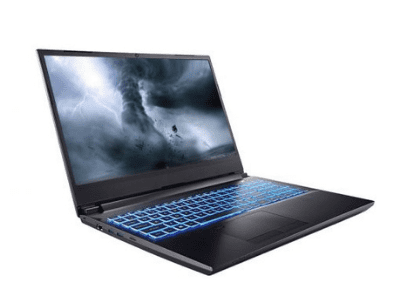
With the Hasee M7-E6S3, you will get the best AMD Gaming laptop…
…which offers the most advanced graphics card and storage technology…
…which increases CPU frequency automatically, doubles the gaming buffer…
…and improves gaming performance too.
The laptop features GeForce RTX built…
…with award-winning Turing™ architecture with new platform RTX…
…which improved its performance up to six times from the previous generation.
It fully supports DIRECTX 12 ultimate, the new standard for next-generation games.
It comes with high-speed memory DDR4 3200 (16GB).
It also comes with a 512GB PCI-e SSD and a pre-designed HDD slot.
The Hasee M7-E6S3 features a 15.6-inch thin bezel screen with 72% NTSC…
…which offers better rendering effects, richer visual, and better gaming performance.
Additionally, it comes with a pre-installed copy of Windows 10.
Further, the laptop is equipped with two fans and six copper pipes, a split cooling system…
…a powerful turbofan to prevent overheating of the device during high-intensity games…
…and a 102-key full-size keyboard with an adjustable backlight.
Xiaomi Mi Gaming Laptop 3 Update
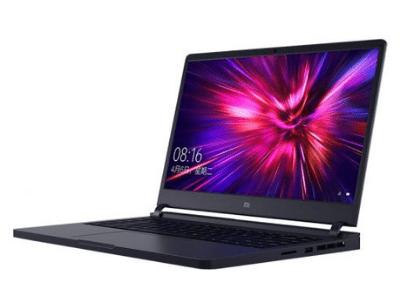
The Xiaomi Mi Gaming Lapbook 2019 Ben 2019 is equipped…
…with an Intel Core i7-9750H processor, which has almost ruled the new market.
As part of the 14nm Coffee Lake process…
…the CPU reference frequency is 2.6GHz and the Turbo frequency is 4.5GHz.
The speed has increased by 400MHz compared to the previous generation Core i7-8750H.
In addition, the i7-9750H has a larger 12MB L3 cache, and memory support has been doubled to 128GB.
The thermal design power remains at 45W, but can be reduced to 35W if necessary.
MSI GS66 Stealth
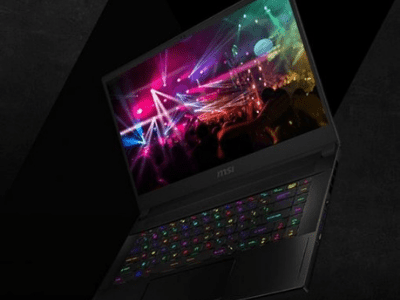
The chassis has plenty of physical connections…
…including a Thunderbolt 3 USB-C port, three USB 3.1 Type-A ports, and an HDMI port.
A thicker chassis also allows it to have an Ethernet jack…
…which is a boon for gamers who want a faster…
…more stable connection while playing or downloading games.
The laptop comes in a variety of configurations…
…some of which are available outside of the U.S.
We tested the second most expensive model, priced at $2,699.
In addition to the 300Hz display, you’ll get an Intel Core i7-10750H processor…
…32GB of memory, an Nvidia GeForce RTX 2080 Super (Max-Q) GPU…
…and a 512GB solid-state drive. Other configurations range from $1,499 to $2,999…
…with CPU options up to the Core i9-10980HK and GPU options down to the RTX 2060.
There are also 1TB SSD options, which might make more sense:
…I think 512GB is too little for modern games, especially at our model’s price.
This is one of the first laptops we’ve tested with both a brand-new processor…
…and graphics chip (following right after Gigabyte’s Aero 15 OLED XB).
Intel just launched its 10th Generation “Comet Lake-H” mobile processors…
…a series of chips that will allow premium laptops (mostly gaming machines)…
…to reach higher performance levels. One of these is the i7-10750H, a six-core…
…12-thread processor, and we conducted some early tests to see how this new series…
…of laptops would perform generally (but read on for more details on the specific performance of this laptop).
The RTX 2080 Super (Max-Q) is one of the most powerful GPUs you can find in a laptop.
Nvidia released “super” versions of the RTX 2080 and RTX 2070…
…offering somewhat better performance at lower prices, as it did on the desktop.
Additionally, we tested a couple of mobile Super GPUs that we got our hands on.
The Max-Q suffix complicates things a bit. You can read more…
…about this term here if you aren’t familiar with it.
Simply put, it is Nvidia’s way of squeezing more powerful GPUs…
…into slim laptops by slightly throttling or down-tuning…
…their power potential to minimize heat production.
We found that Max-Q somewhat muddied the on-paper Nvidia GPU hierarchy…
…and the down-tuning seemed to affect the RTX 2080 more than the RTX 2070.
This explains some of the results below, which aren’t as clear-cut as you might think…
…thanks to so many factors affecting frame rates.
Sum Up!
The performance of Intel and AMD CPUs will be excellent…
…for everyday tasks like web browsing, watching Netflix, and answering emails.
Occasionally, one company’s options perform better than the others for certain tasks.
In addition, AMD’s processors are ideally suited to multithreaded tasks…
…such as video editing or transcoding, or heavy multitasking with tens of browser tabs open.
With its high-end chips, Intel undercuts AMD, but the performance gap is bigger than the price gap.
AMD Ryzen 5000 CPUs are still the best choice if you’re working and playing on a desktop…
…or if you’re just gaming. From the 5600X to the ludicrously powerful 5950X…
…each offers the best gaming and productivity performance.
It is becoming more affordable to make Intel’s options more competitive…
…which might make them worth it. However, AMD still leads in terms of raw power.
Conclusion
Here is the answer you’ve all been waiting for.
In our opinion, AMD Ryzen is the better option for gaming at the moment…
…but it remains to be seen whether the situation will change anytime soon.
So, why Ryzen?
Ryzen offers more performance for less money…
…than high-end Intel CPUs when it comes to gaming;
…they aren’t superior at everything, but high-end Intel CPUs are generally a better choice…
…for enthusiasts and some professionals…
…due to their overclocking abilities and superior single-core performance.
In addition to having more threads and comparable gaming performance…
…they are also slightly cheaper. Additionally, it is much easier to upgrade…
…to a newer CPU since compatibility issues won’t be an issue…
…(although, as mentioned above, AMD will be replacing the AM4 socket with the AM5 in 2021).
The cherry on top is that AMD’s stock coolers are also much better than Intel’s.
The combination of these factors makes Ryzen a better and more cost-effective solution…
…something that many gamers are sure to appreciate.
It is not to say that Intel isn’t a good choice – as mentioned earlier…
…Intel’s CPUs still have better single-core performance and they overclock better…
…keeping them relevant for high-end systems.
Currently, they aren’t exactly a great value for the average gamer…
…because they can easily come across as overpriced and the compatibility issues turn us off.
Intel CPUs are worth the money if you’re building a high-end gaming…
…or workstation PC and intend to overclock the CPU to get as much performance as possible.
Other than that, AMD is clearly the best choice for mainstream gaming.
Related Articles For You!
- You may like: Why Gaming Laptops Are Better? Superb 5 Facts About This Gaming Gear
- You may enjoy this article about: XIDU Touchscreen Ultrabook Laptop Review: 3 Important Things You Need To Know!
- This article may be interesting:Review of MSI GS66 Stealth Gaming Laptop – Bringing You a Powerful Gaming Experience!
Our Latest Posts:


